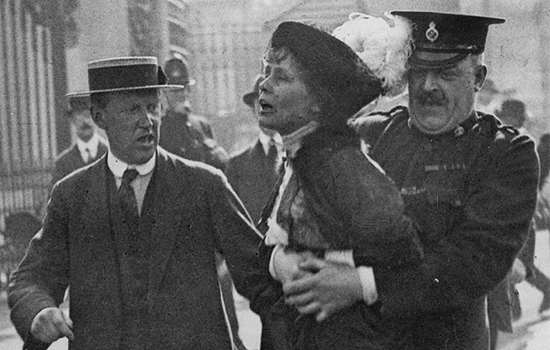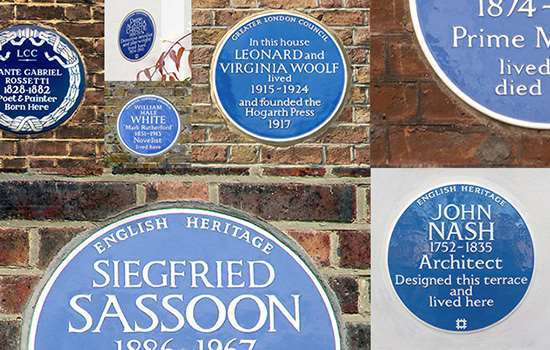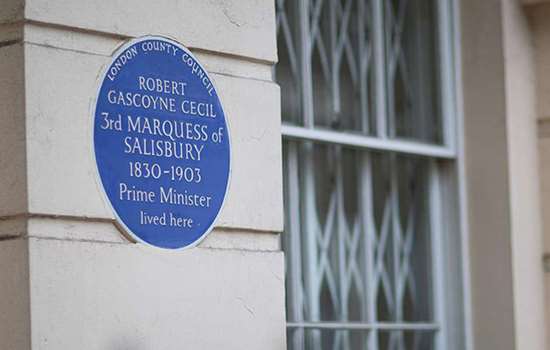ABERCROMBIE, Sir Patrick (1879-1957)
Plaque erected in 2019 by English Heritage at Flat 1, 63 Egerton Gardens, Brompton, SW3 2BZ, Royal Borough of Kensington and Chelsea
All images © English Heritage
Profession
Town and country planner
Category
Architecture and Building
Inscription
Sir PATRICK ABERCROMBIE 1879-1957 Pioneer of town and country planning lived here
Material
Ceramic
Sir Patrick Abercrombie is the most celebrated British planner of his generation. He played a pivotal role in creating the professional practice of town and country planning and was central to the rebuilding of post-war London through his County of London Plan (1943) and Greater London Plan (1944). He is commemorated with a blue plaque at Flat 1, 63 Egerton Gardens in Brompton – his London home for eight years from 1935.
Academic, Architect, Planner
Leslie Patrick Abercrombie, known by his middle name, Patrick, trained as an architect and established a successful academic reputation as first a research fellow (1909), and then Professor of Civic Design (1915), at the University of Liverpool. While teaching he also continued his practice in architecture, was the first editor of the Town Planning Review, and was a founding member, and later president (1925–6), of the Town Planning Institute.
A Champion of Regional Planning
In the 1920s and 1930s Abercrombie championed the need for regional planning and prepared a number of ambitious new plans including those for Doncaster, Sheffield, East Kent, Bristol and Bath, and Cumbria. In these plans Abercrombie demonstrated his understanding of the many interrelated factors that needed to be considered by planners such as geology, landscape, architecture, industry and transport. Abercrombie was also a strong advocate for implementing ‘green belts’ to safeguard agricultural land from growing urbanisation.
The London Plan
In 1935 Abercrombie became Professor of Town Planning at University College, London, and moved to the city, taking up residence at Flat 1, 63 Egerton Gardens in Brompton with his wife. He remained there until either 1942 or 1943. The flat is the only surviving residential address in London associated with Abercrombie.
While living there Abercrombie embarked on the replanning of post-war London. His role in shaping the future of the capital, through the creation of the County of London Plan (1943) and the Greater London Plan (1944), is considered one of his greatest legacies.
The former, created with the architect JH Forshaw, identified key problems such as overcrowding and poor housing in deprived neighbourhoods, traffic congestion and the inadequate provision of open space. Abercrombie and Forshaw’s recommendations included the separation of industry and housing, the enhancement of historical centres, an increase in open space and the creation of three ring roads to ensure the city’s functionality.
The Greater London Plan was a regional plan created with Gordon Stephenson and Peter Shepheard. It was based on the concept of four concentric rings around London, namely the urban core, the suburban ring, the green belt and an outer county ring.
Many (though not all) of the recommendations in these two plans were realised in the following decades, with the creation of eight new towns, the statutory protection of the green belt and the creation of the M25. The plans inspired many other major cities around the world to adopt a similarly strategic and holistic approach to planning.
In 1945, Abercrombie was given a knighthood and in 1948 he became the first president of the International Union of Architects, which now annually awards the Sir Patrick Abercrombie Prize for excellence in town planning. Abercrombie died in 1957. He continues to be internationally recognised as the pioneer of town and country planning, and is celebrated as someone who placed people at the heart of the planning process – a principle that is preserved today.
Nearby Blue Plaques
More About Blue Plaques



